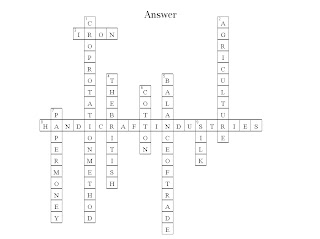Mughal India
Pre-colonial:
Before
the British came to power, India had maintained a self-sufficient agriculture.
The empire was able to produce and consume within its borders. Also, the country
had managed balanced trade, which means the export was greater than the imports
and thus India gaining from trade with other countries. Items imported into
India were pearls, wool, dates, dried fruits, and rosewater from the Persian
gulf; coffee, gold, drugs, and honey from Arabia; tea, sugar, and silk from
China; gold, musk, and woolen clothes, metals like copper, iron, and lead, and
paper from Europe. Items exported from India were cotton textiles. Beside
cotton textiles, which wre famous all over the world, India also exported raw
silk, indigo, opium, rice, wheat, sugar, pepper, and other spices, precious
stones, and drugs. Handicraft industries were one of the major sectors of the
economy and it was widely practiced.
During British Rule:
Under
the British rule, India’s economy faced some changes. One of the most important
changes was the commercialization of agriculture. Opposed to the previous
self-sufficient agriculture, now the Mughal agricultural industry focused on
cash crops. Also, India became an importer of cotton. This ruined the economy
as India used to earn profit from selling cotton to foreign markets. However,
there were some improvements in the economy that took place during the British
rule. The improvements are: 1) building of the railroads, 2) establishing
telegraphs in the country which contributed to the immense improvements in communication,
and 3) impose of legal system that stabilized the society with society-wide
laws.
Ming China
Ming Dynasty is one of the three golden
ages of China. During the Ming period, the economy had improved in technology,
agriculture, trade, and manufacturing. Also, during the Ming reign, Chinese
economy was showing signs of early form of capitalism.
Agriculture
Ming farmers used crop
rotation methods and powered plowing with water, both with improved
agricultural output. Such affluence set tones for early form of capitalism in
China. Tea and fruit orchards grew in particular regions where soil fertility
was high.
Agricultural Influences on the Ming
Economy
The new economy made
farmers able to cultivate massive land for cash crops. Such cash crops were
important because of the rising population and decreasing land fertility.
However, advancements in tools, carts, and water-powered plowing equipments
helped with raising cash crops.
3 Types of markets in Ming
Dynasty: rural market, urban-rural market, and national market.
Manufacturing
Manufacturing in Ming China
became more improved and productive with variety of goods, compared to the Song
Dynasty that preceded the Ming. Iron was produced at the most efficient rate in
the history. Many industries, such as tea and salt, were privatized and
propelled by powerful merchants.
Ming Dynasty abolished
forced labor and adopted wages for workers in manufacturing industries.
Commerce and Trade
Ming Dynasty also is marked
with flourishes of trade, commerce, and investment due to its liberalized
economy. Ming built canals for irrigation, bridges, and roads. Ming could trade
with faraway markets, such as Japan and Europe.
Comparisons:
1.
Large portion of
agriculture in the domestic industries.
2.
Vast land = huge
domestic market unlike small nation-states of Europe.
3.
Use of currency,
coins.
Mughal's coin
Ming China's coin
4.
Active trades with other countries.
5.
Open to trade with Europeans.
A.
Qing China opposed
the trend of Ming’s outward economy, and adopted
anti-merchant strategy.
Silver Trade – China traded its good such as silk
porcelain and tea with silver from the Europeans. Silver was important material
for the Chinese because it was used as a medium of exchange. Thus the silver
trade is the beginning of Chinese modern economic structure.
Problem with Silver Trade- The Chinese monetary system was based on the assumption that the amount of
silver coming in to the country is constant. But when number of extra silver
from the foreign country increased, Chinese economic system could not managed
the extreme imbalance in the exchange rate and experienced huge economic crisis
in the 1500s.
Contrasts:
1.
Vast majority of Mughal Empire’s
manufacturing started with the British colonial rule, while China had its own
form of manufacturing even before Ming dynasty.
2.
Exported and imported different goods:
A.
items exported from India were cotton
textiles. Besides cotton textiles which were famous all over the world, India
also exported raw silk, indigo, opium, rice, wheat, sugar, pepper and
other spices, precious stones and drugs
B.
items imported into India
were pearls,wool, dates, dried fruits and rosewater from the Persian
gulf; coffee, gold, drugs and honey from Arabia; tea,sugar and silk from
China; gold, musk and woollen cloth; metals like copper, iron and lead,
and paper from Europe.
C.
China exported tea, sugar, and silk, and
imported opium, metals, and European luxuries.
3.
In India, handicraft industries were widely
spread and flourishing.
4.
In China, iron was made at the highest speed
in history, tea and salt manufacturing were privatized.
5.
In Mughal Empire, paper money was introduced
much later, in around late 1700s. While in Ming China, paper money and bank
notes were widely utilized.


















